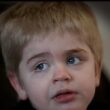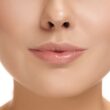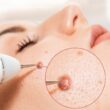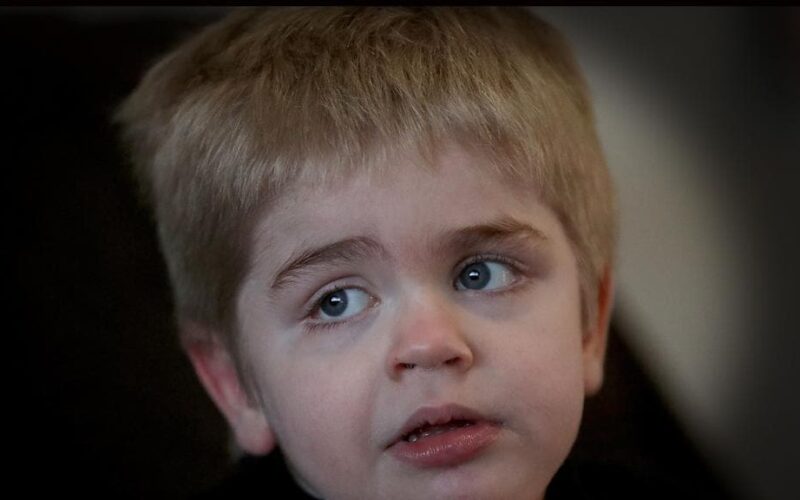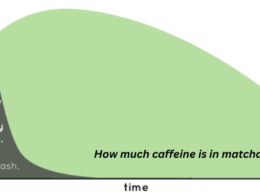Sanfilippo condition, otherwise called Mucopolysaccharidosis Type III (MPS III), is an interesting hereditary problem that dominatingly influences the mind and sensory system. Youngsters determined to have this condition frequently face a progression of physical, formative, and mental difficulties as the infection advances. One of the most noticeable highlights of the disorder is the presence of coarse facial elements, including full lips, weighty eyebrows that might compromise (known as synophrys), and other particular actual attributes like short height.
In this article, we will investigate the different parts of Sanfilippo disorder with an emphasis on its actual signs, particularly the eyebrow highlight, to give an educational and drawing in asset for perusers.
Introduction to Sanfilippo Syndrome
Sanfilippo condition is essential for a gathering of metabolic problems known as Mucopolysaccharidoses (MPS). It is made by the body’s powerlessness separate specific sugar atoms called glycosaminoglycans (GAGs) because of the absence of explicit chemicals. As GAGs develop in the cells, tissues, and organs, they cause moderate harm, especially influencing the cerebrum and other fundamental frameworks.
Subtypes of Sanfilippo Syndrome:
- Type A: The most severe form caused by the absence of the enzyme heparan-N-sulfatase.
- Type B: Caused by the deficiency of alpha-N-acetylglucosaminidase.
- Type C: Involves the lack of acetyl-CoA: alpha-glucosaminide N-acetyltransferase.
- Type D: Results from the absence of N-acetylglucosamine 6-sulfatase.
Physical Characteristics of Children with Sanfilippo Syndrome
While mental deterioration is one of the principal qualities of Sanfilippo disorder, kids with the condition additionally foster particular actual attributes over the long haul. These qualities, while not destructive in themselves, can be marks of the disorder, helping with finding.
Common physical features include:
- Short Stature: Many children with Sanfilippo syndrome have a below-average height.
- Coarse Facial Features: Over time, facial features become more pronounced, including full lips and a broad nose.
- Heavy Eyebrows (Synophrys): One of the most prominent characteristics is thick, heavy eyebrows that often meet in the middle, contributing to a unique appearance.
- Hirsutism: Excess hair growth can also occur, particularly in unusual areas such as the forehead and arms.
What Causes the Heavy Eyebrows in Sanfilippo Syndrome?
The improvement of weighty eyebrows in Sanfilippo condition is essential for the more extensive arrangement of actual elements that emerge because of the body’s failure to separate specific atoms. These particles aggregate in different tissues, prompting the improvement of coarse facial elements. The overabundance hair development, or hirsutism, is a typical side effect of metabolic stockpiling illnesses, and on account of Sanfilippo disorder, this presents most strikingly as thick, noticeable eyebrows.
The Link Between Eyebrow Features and Hirsutism
Hirsutism, or unusual hair development, isn’t one of a kind to Sanfilippo disorder, however in this condition, it takes on specific structures, like thick, shaggy eyebrows. The hereditary changes liable for Sanfilippo disorder disrupt ordinary cell capabilities, which likewise influences hair follicles and development designs. This strange guideline brings about the trademark eyebrow development as well as overabundance body hair in kids impacted by the condition.
Skeletal and Joint Abnormalities in Sanfilippo Syndrome
Past the trademark facial highlights, kids with Sanfilippo disorder may likewise give numerous skeletal and joint anomalies. These may include:
- Joint Stiffness: Limited mobility in joints due to the buildup of GAGs in connective tissues.
- Hip Dysplasia: Malformation of the hip joints.
- Scoliosis: Curvature of the spine.
How Does Sanfilippo Syndrome Affect Growth and Development?
Sanfilippo condition essentially influences both mental and actual turn of events. Youngsters frequently show typical development designs in early outset, yet by the age of a few, formative deferrals become obvious. Engine capability can be impacted, for certain youngsters encountering trouble strolling or creating coordination issues.
Growth abnormalities include:
- Delayed Motor Development: Children may struggle to hit key developmental milestones, such as walking or speaking.
- Short Stature: By the time physical symptoms manifest, children with Sanfilippo syndrome typically exhibit slower growth rates compared to their peers.
Diagnosis and Early Detection
Early discovery is significant in overseeing Sanfilippo condition, albeit the sickness’ sluggish movement frequently defers analysis. Hereditary testing, chemical measures, and pee tests are utilized to affirm the presence of GAG development and the particular subtype of Sanfilippo disorder.
Diagnostic techniques include:
- Genetic Screening: Identifies mutations responsible for the disease.
- Enzyme Activity Assays: Measures enzyme levels to confirm deficiencies.
- Imaging Tests: MRI scans may be used to monitor brain changes.
Managing the Physical Symptoms of Sanfilippo Syndrome
While there is no remedy for Sanfilippo condition, dealing with its side effects, particularly the actual signs, can work on the personal satisfaction for impacted people. This incorporates treatments pointed toward tending to skeletal irregularities, joint firmness, and the administration of facial elements, for example, synophrys.
Symptom management options:
- Physical Therapy: Helps maintain mobility and joint flexibility.
- Occupational Therapy: Supports daily activities and helps children cope with physical limitations.
- Cosmetic Interventions: For families concerned about the appearance of heavy eyebrows or excess hair, cosmetic treatments such as laser hair removal may be considered.
Understanding the Broader Impact of Physical Features on Children
Kids with Sanfilippo condition might confront social and inner difficulties because of their particular actual appearance. Highlights like thick eyebrows or hirsutism can prompt hesitance or troubles in friendly cooperation, especially as the youngster becomes older.
Psychological considerations:
- Self-Image: Children may feel isolated or different from their peers due to their appearance.
- Support Systems: Counseling and peer support groups can be invaluable in helping both the child and their family navigate these challenges.
Outlook and Future Research
Progressing examination into compound substitution treatments, quality treatment, and foundational microorganism medicines offers expect what’s in store. Researchers are centered around creating medicines that oversee side effects as well as focus on the fundamental reasons for the infection. As examination proceeds, there is good faith for treatments that can slow or try and opposite the impacts of Sanfilippo condition.
FAQ Section
Q: What are the first signs of Sanfilippo syndrome?
A: Early signs incorporate postponed discourse, social issues, and mental relapse. Actual characteristics, similar to weighty eyebrows and coarse facial highlights, become more obvious as the illness advances.
Q: Is there any treatment for the heavy eyebrows or hirsutism in Sanfilippo syndrome?
A: While there’s no treatment well defined for Sanfilippo condition for weighty eyebrows, restorative medicines like laser hair expulsion or waxing might be thought of whenever wanted.
Q: Can Sanfilippo syndrome be cured?
A: There is no remedy for Sanfilippo condition, however medicines are being created to oversee side effects and work on personal satisfaction.
Q: How is Sanfilippo syndrome diagnosed?
A: Analysis is commonly affirmed through hereditary testing, catalyst movement measures, and imaging tests to notice mind and organ changes.
Conclusion
Sanfilippo syndrome is a complex condition with a range of physical, cognitive, and emotional challenges. The heavy eyebrows, short stature, and skeletal abnormalities associated with this disorder are among the many visible markers. However, by understanding the disease’s progression and managing its symptoms, families can help affected children live more comfortable and fulfilling lives. Research continues to offer hope for better treatments, emphasizing the importance of early diagnosis and comprehensive care.
